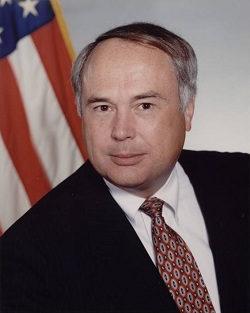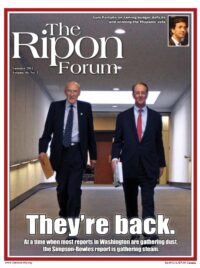
For nearly four years, the Obama Administration’s trade policy has been a bit of a mystery. In the beginning, they put then-pending free trade agreements on hold due to opposition from labor, one of their core constituencies, while they searched for a formula that would make the agreements true “21st century” agreements, a term that remained largely undefined. They also took, with business community support, a hard line in the Doha Round of multilateral negotiations, insisting that any agreement provide measurable benefits to American businesses and workers.
The Doha Round’s at least temporary failure, along with the ultimate enactment of the FTAs with Colombia, Korea and Panama, created a new policy gap – what to do next. That gap has been partially filled by U.S. participation in the growing Transpacific Partnership (TPP) talks.
The Administration’s thought process in entering the TPP talks provides some insight into how it approaches trade policy generally, and it also gives some hints for U.S.-EU talks. What appears to have been the decisive factor in joining TPP was the realization that if we did not, Asians would perceive us as abandoning the region – an uncomfortable thought for someone who aspires to be the “Pacific President.” Instead, our participation meshes nicely with the famously clichéd “pivot” to Asia, and it also teaches us an important lesson: this Administration is interested in trade agreements to the extent they reinforce broader geopolitical goals. While one can easily justify TPP in terms of the increased trade and investment it will ultimately provide – and the Administration has occasionally done that – the clear motivation for our involvement has been the larger implications it has for our presence in the region and how it positions us vis a visChina, with whom our competition grows daily.
While one can easily justify TPP in terms of the increased trade and investment it will ultimately provide … the clear motivation for our involvement has been the larger implications it has for our presence in the region and how it positions us vis a vis China, with whom our competition grows daily.
This story is worth telling because of its implications for Europe. The somewhat unexpected outcome of last December’s summit was the creation of a High Level Working Group (HLWG) to explore ways to deepen and enhance the transatlantic economic relationship. After some initial skepticism, largely on the part of negotiators on both sides who have spent years struggling unsuccessfully, momentum began to build, particularly in the EU, for a big deal – one that provides meaningful liberalization of trade and investment rules and significant harmonization of standards and regulations, the latter being by far the bigger issue. The interim HLWG report issued June 19th lays out that possibility in some detail without irrevocably committing to it.
Here again it appears the motivation, probably on both sides, is geopolitical as much as it is economic. The trade issues that divide the U.S. and the EU are not new; many have been under negotiation in one forum or another for years. What is new is our common concern about the competitive challenge posed by rapidly emerging economies, primarily China, not just in terms of imports but also in terms of the latter’s desire to develop its own standards and use its market power to persuade others to adopt them, to the advantage of their producers and the detriment of ours. If the EU and the U.S. could agree on a common approach to standards and regulation in areas like health, safety, the environment, and telecommunications, then the joint market power we represent would be a significant counter-force. In other words, transatlantic trade talks are more about how developed countries compete going forward with rapidly developing ones than they are about the details of bilateral market access – precisely the kind of large geopolitical goal that has been this Administration’s focus.
The negotiating process thus far has been colorfully likened to two dogs sniffing at each other. It is apparent that both sides are tempted to pursue an ambitious agreement, but each is suspicious the other cannot deliver on it – not without reason. The “sniffing” has involved identifying red lines – those issues where concessions are politically impossible. For example, the EU assumes the U.S. cannot move on the Jones Act. The U.S. assumes the EU cannot move on GMOs and some other agricultural issues. Both sides are determined not to launch a negotiation doomed from the beginning to fail, so if it is determined the “red zones” are too large, we will see a less ambitious negotiation.
The toughest nut to crack involves standards and regulation. While there are exceptions, tariffs are already low, and each side has extensive market access in the other. Further improvements will remove some sectoral irritants but will not change the landscape significantly. In contrast, we have been discussing regulatory harmonization for more than twenty years with little progress. The issues are weedy, which means they usually end up being negotiated by the expert regulators, whose mandates are focused on protecting domestic health and safety and rarely require them to take international considerations into account. At a minimum, it will take creativity, persistence, and high level political pressure to produce results, and that’s only about the process.
The toughest nut to crack involves standards and regulation … The issues are weedy, which means they usually end up being negotiated by the expert regulators, whose mandates are focused on protecting domestic health and safety and rarely require them to take international considerations into account.
Underlying the process is the reality that the two sides have fundamentally different views on some important principles. Three examples: privacy, competition, and precaution.
EU concerns about privacy have focused less on government access to personal information and more on private parties’ access to others’ private information. In the U.S., there has been much greater concern about government access. EU antitrust regulators are generally seen as being more interested in competitors than in competition, while the U.S. is the reverse. EU regulators have long advocated various forms of what is known as the precautionary principle – the idea that things should be prohibited out of precaution, even in the absence of current scientific evidence that they are harmful. The U.S. typically requires sound scientific evidence before taking an action.
These are not minor matters. You can see the differences reflected in the EU Privacy Directive, REACH (the EU chemicals directive), the EU’s rules on GMOs and both sides’ antitrust policies. Creative outside-the-box thinking may be able to paper over some of these differences, but the likelihood is that on many of them, we will ultimately have to agree to disagree which will, in turn, limit the scope of whatever agreement is developed.
Thus, while the geostrategic goal – the need to join together to deal successfully with China – is clear and strong motivation, moving as far in its direction as both sides would like may be difficult. That is what the parties are currently trying to determine, and it is what we will have at least a preliminary answer to later this year.
Bill Reinsch currently serves as President of the National Foreign Trade Council. He is also Vice Chairman of the U.S.-China Economic and Security Review Commission. Previously, he served as Under Secretary for Export Administration in the U.S. Department of Commerce.




